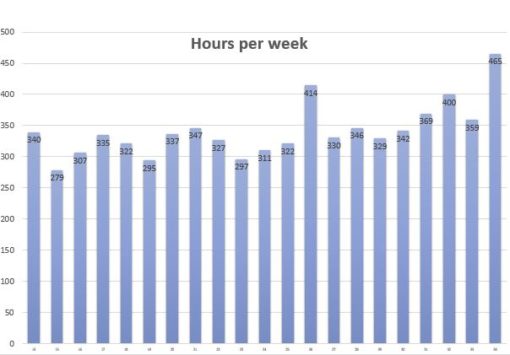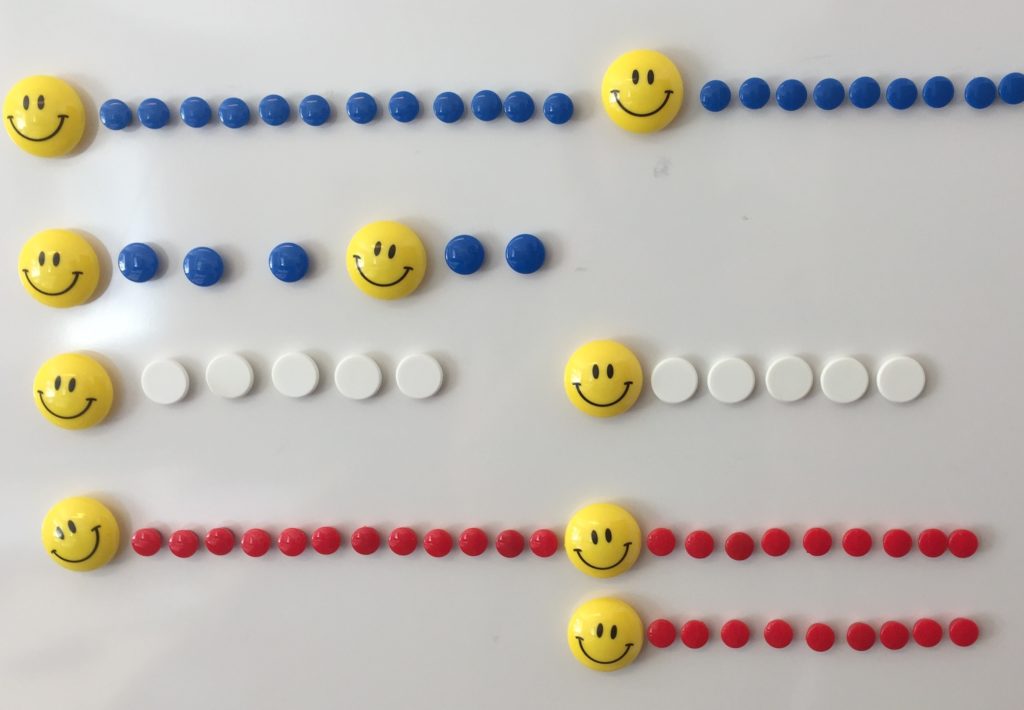This post is also available in:
 Danish
Danish
Structure and rhythms are very important to work effectively. In animal production it is also very important for animal welfare. It is possible in animal production to plan the day and season. It is also possible in vegetable production, although the rhythm is different.
Structure and planning are absolutely necessary as agriculture grows and there are more employees. The goal is for every employee to know what to do every hour on every day of the week. It gives a nice calm and rhythm in everyday life and room to handle, the variations that will also come.

Stability or fire fighting?
When there is a big difference in how many hours are spent each week, it tells me that there is a lack of planning and a lot of fire fighting. In some places the tasks are arranged day by day. There is a change between who performs the various tasks and there is not a fixed weekly schedule for all tasks.
There is no doubt that it results in poorer efficiency, so a firm structure and work schedule is a necessity to become effective.
How many hours do your production need per week?
Try not to count on how many employees you have. Instead, think about the tasks: What does each task require of time? What does the week’s tasks of time require to be done properly? Is it 350 or 375?
Only when you know that number can you start working on becoming more efficient and getting a lower labor cost per unit produced.
Eight Steps: How to Make a Work Plan
- Based on production needs . When I make a work plan, I always take the animal’s needs or crop requirements as a starting point. It must be possible to perform Best Practice. The cows should be able to go out for fresh feed after milking, the sows should have more surveillance on the days when they are farrowing and crops should be sprayed at the optimum time. Therefore, I start by making a plan where the tasks are placed correctly in relation to the production requirements.
- Place the tasks on the day . Next, we make an estimate of the tasks’ time spent each – or we make a regular time record. It is necessary to be able to place the tasks right on the day, week and month. First I place the fixed tasks and then I use the variable tasks to level the day, week and month, so that we hit the same time spending every day – as far as possible.
- Choose a working weekend model . Some choose a model with working weekend every two weeks and some have working weekend every three weeks. Therefore, a rolling 14-day or 21-day model must be made. It may also be that the model also has to accommodate variations in production, such as. in sow hold or crop production. The important thing is that we make a basic model that does not need to be changed continuously. It must be a firm basic model.
- Put the tasks together into positions. The tasks are grouped into positions; that is, the tasks that belong in type and time turn into a position. On larger farms there may be several in the same position eg. milking, but on smaller farms the same person can take multiple positions during the day.
- Determine qualification requirements for the position. Only then do I start putting people on. Not with names in the first place, but in relation to qualifications. What educational requirements there must be for the individual positions. Does the employee need specific certificates or experience to take the position?
- Put names on the plan . Only now can we begin to put names on the positions. If you do not have the right people right now, you can make an education plan so you can upgrade an employee e.g. with training or a new certificate. You may also need to make a transitional arrangement, but it may not be the case that you move around the tasks every time you get new people. When you next recruit for a position, make sure they have or can obtain the skills you need in that position. Stability is very important and you destroy it by moving around the tasks.
- Put a back up on each position . A decision must be made as to who can step in if a person has to take sick leave or have an unplanned day off. It must be a person who knows the tasks in the position and who has the opportunity to step in. It is optimal if there are two people on the farm who know the tasks in each position.
- Schedule relief . Annual leave and public relief require approx. 15% more hours than on the fixed weekly schedule. (In Denmark workers must have an annual leave for five weeks + public relief) If you have sick leave, you must also have capacity for it. The normal level in agriculture is approx. 2-4%. This means that every time your production requires 100 hours of work per week, you need to have people for 115 – 118 hours in all. In many smaller farms, it is often the owner himself who steps in, but that is not enough in the larger farms.

Work plan without structure. The tasks are solved in random order and by different people. 
Work plan with structure. The tasks are performed in regular order and by the same people every day.


